What Temperature Kills Mold? (Find Out Now!)

The thought of mold tends to make most people nervous, and for good reason. Mold growth, when left unchecked, can lead to serious problems like health issues and irreversible damage to your property. Luckily, there are some simple ways to kill mold and prevent future mold growth.
Temperatures of 140 to 160 degrees Fahrenheit kill most types of mold, but the heat should be applied for 20 to 25 minutes for it to be fully effective. Always check first to make sure it’s not a heat-resistant type of mold, otherwise, heat is not going to kill the spores.
In this article, we will talk about how to kill mold with heat. If your spores are heat resistant, then we also have a few tricks up our sleeves to share with you so you can get rid of the stubborn spores as well.
What Temperature Kills Mold?
Generally, temperatures between 140 and 160 degrees Fahrenheit are sufficient to kill mold. It must be exposed to the high temp for at least 20 to 25 minutes in order to kill off all of the spores.
Some rare strains of mold can resist temperatures of 140 to 160 degrees. However, these high temps are enough to kill off most types of mold. It’s often recommended to use heat in addition to other mold treatments like fungicide rather than on its own.
How Do You Prevent Mold?
Just as with most problems, it’s typically better to prevent mold than to treat it after it’s already grown. Here are a few ways to make mold growth less likely.
- Use A Dehumidifier: Moisture and mold go hand in hand. Therefore, investing in a dehumidifier is a good choice for areas of your home that are prone to high humidity.
- Improve Ventilation: Opening windows, running fans, and using air filters are a few ways to improve ventilation. The more air circulation, the less likely mold is to grow.
- Use Mold-Proof Products: You can find products like mold-proof primer, paint, and sealers at your local hardware store. These products often prevent both mold and mildew.
What Are The Different Ways To Kill Mold?
When dealing with mold, be sure to take the proper safety precautions. Precautions include opening windows, if possible, and wearing protective gear like eyewear, nonporous gloves, and a face mask. Avoid mixing bleach and other cleaners as this can cause toxic fumes.
Fungicide
You can buy fungicide at your local hardware store. It’s typically pretty affordable and simple to use. Be sure to follow the manufacturer’s directions when using store-bought fungicide.
DIY Solutions
If you’d prefer to use ingredients you’re likely to have in your home, there are a few options. You could mix a diluted bleach solution with eight ounces of bleach per one gallon of water.
Another option is to make a diluted white vinegar solution. You can also use hydrogen peroxide to kill mold. Regardless of the method you choose, use a brush to scrub the mold with the solution.
Intense Temperatures
As mentioned previously, a temperature of 140 to 160 degrees Fahrenheit is enough to kill most strains of mold. Extreme cold can also affect mold growth, but it isn’t as effective as high heat. Rather than killing the mold, cold deactivates mold so that it becomes dormant.
However, once temperatures rise again, the mold will reactivate and continue to grow. Therefore, cold temperatures aren’t often recommended for killing off mold, only for slowing their growth.
Eliminating Mold On Clothing
Have you ever left a damp pile of laundry sitting in the corner for far too long? Well, there’s an easy way to get rid of any mold growth on clothing. Simply throw the clothing in the dryer on high heat for about 25 minutes.
Exposure to this high temperature will be sufficient to kill off all the mold. You’ll want to follow up by washing and drying the clothing as usual.
Killing Mold On Cookware
If you’ve left your dishes sitting in the sink for an extended period of time, don’t worry! You can put the moldy dishes in the oven (no plastic, of course) for 20 minutes at 300 degrees Fahrenheit.
Do You Need Mold Removal Services?
Get free, zero-commitment quotes from pro contractors near you.

What Does Mold Look Like?
Not sure if what you’re seeing is mold or not? Here are some easy tips to help identify mold.
Distinctive Odor
One thing to know is that you can often smell mold before you can see it. Mold tends to have a stale, wet, musty, or earthy odor. It can make you sneeze, irritate your nose, and exacerbate asthma symptoms in some cases.
Discoloration And Dampness
A few visual indicators of mold are dampness and dark or discolored spots on the walls. Moldy carpet is also likely to be discolored. If the grout between tiles is moldy, it will often start to look darker in appearance.
Peeling wallpaper is another sign of mold. You might find mold on your bathroom tiles or grout, under the sink, around windows, or on your basement walls.
Is It Mold Or Something Else?
Not sure whether you’re looking at mold, dirt, or a stain? Old stains and dirt won’t change in size and shape over time. However, mold will continue to grow if left untreated.
What if you smell mold but can’t see it? It’s best to call a professional for an assessment. There’s a chance you might have mold growing inside of walls or in other unseen locations.
Black Mold Appearance
Concerned that the mold you’ve spotted is black mold? Stachybotrys Chartarum, or black mold, is usually dark green to black in color. It has a slimy texture due to a layer of moisture on top of the mold spores.
To know for sure whether or not you’re dealing with black mold, a mold remediation expert will need to test it. However, black mold rarely grows inside of homes.
Why Is Mold Bad?
Mold is problematic for two main reasons: it can cause health issues and property damage. As mold grows, it feeds on the material that it’s growing on, causing irreversible damage.
At the same tiny, it releases tiny spores and other byproducts into the air. These byproducts can lead to health issues, most commonly respiratory problems. Often, mold causes symptoms similar to allergies.
These symptoms include runny nose, congestion, eye irritation, sore throat, skin rash, headache, coughing, sneezing, wheezing, and lung irritation.
Removing Mold: DIY Or Hire A Professional?
Mold is no joke, as it makes many people sick and can even be deadly. Therefore, it needs to be removed as soon as it’s discovered. However, people often wonder if this is something thy can do on their own, or if they should hire a professional.
Who Should Not Remove Mold On Their Own
While this is usually a DIY friendly project, there are several individuals who should not do this. If you have anyone in your home who is allergic to mold, or if you’re allergic to mold, you would be better off calling a professional.
Also, if you have any serious health issues or respiratory conditions, don’t do this on your own. Or, if you don’t have the gear for it, it’s better to put it in someone else’s hands.
When To Call A Professional About Mold Removal
If this is a project that you are not comfortable undertaking then you should call someone to do this for you. Also, if you have a small spot of mold, chances are you don’t need to hire someone to help you. However, if you have a whole wall of mold, you may have a serious problem.
Mold tends to grow through drywall and wood. If you have a whole wall full of mold, it most likely grew into the wall or floor, in which you will need a contractor for the job.
Do You Need Mold Removal Services?
Get free, zero-commitment quotes from pro contractors near you.

Related Questions
Is mold a fungus?
Mold is a type of fungus that is made up of multicellular filaments called hyphae. Yeast is another type of fungus composed of single-cell filaments.
Put simply, mold and yeast are two types of fungi, or microscopic organisms that thrive in moist environments.
What temperature kills mold on a grill?
To kill mold on a grill, you should raise the temperature to 140 to 160 degrees Fahrenheit. Most molds can’t survive temperatures of 140 degrees or higher.
Plus, heating your grill to this high temperature will also loosen up oil and food debris, making it easier to clean.
What mold is penicillin?
Penicillins are drugs that attack many different types of bacteria. Penicillin comes from penicillium mold.

With a lifelong passion for writing plus strong enthusiasm for home improvement and DIY projects, joining the team at Upgraded Home was an easy choice. Jessica Allen likes to share helpful information with current and aspiring homeowners. Aside from writing, Jessica loves doing yoga, playing the piano, and dabbling in graphic design.
More by Jessica Allen



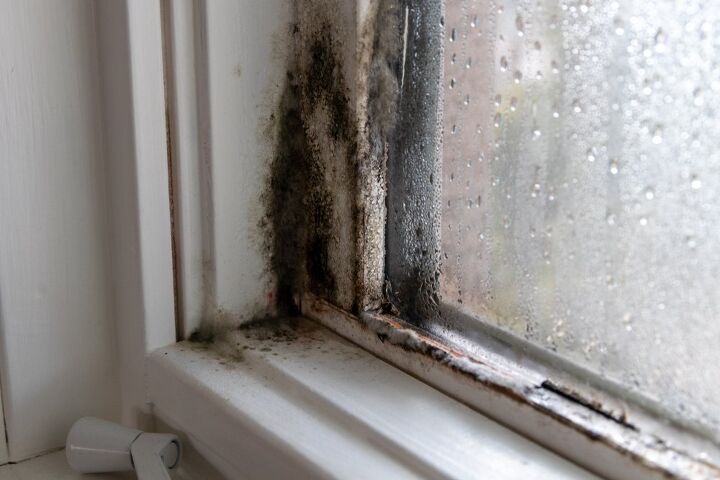
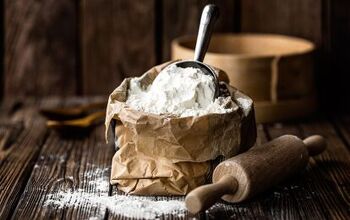





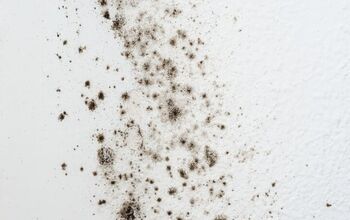
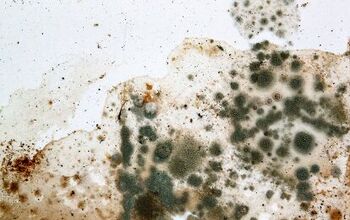


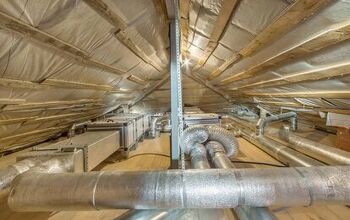
![Cost To Drill A Well [Pricing Per Foot & Cost By State]](https://cdn-fastly.upgradedhome.com/media/2023/07/31/9074980/cost-to-drill-a-well-pricing-per-foot-cost-by-state.jpg?size=350x220)



![12 Washing Machine Brands to Avoid [with Recall Data]](https://cdn-fastly.upgradedhome.com/media/2023/07/31/9075781/12-washing-machine-brands-to-avoid-with-recall-data.jpg?size=350x220)







